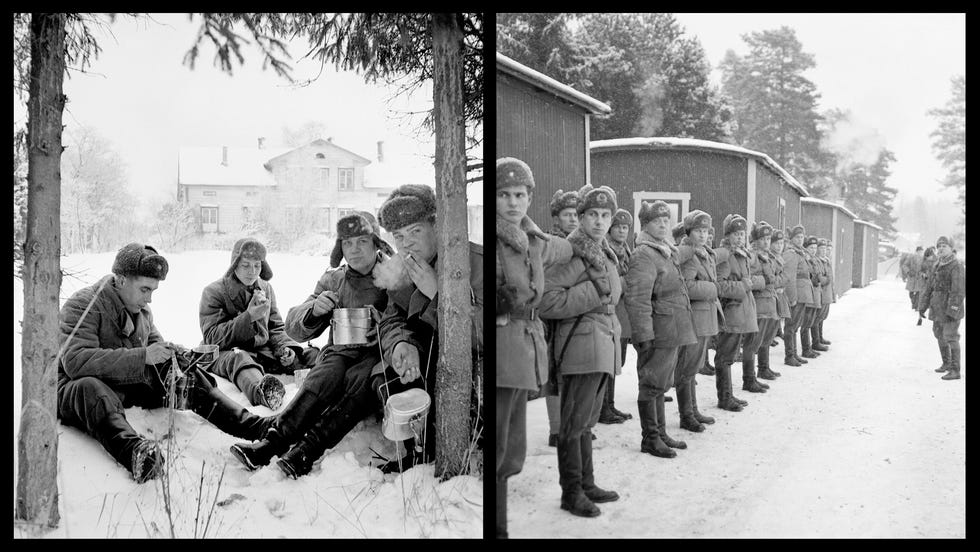The complicated relationship between Russia and Finland is yet again in a state of decline.
On Sunday, Finland declared it would officially apply to become a member of NATO during a news conference at the Presidential Palace in Helsinki. Before seeking membership, Finland’s parliament must ratify the decision.
“This is a historic day. A new era begins,” Finish president Sauli Niinisto said.
Support for joining NATO has jumped by 25% in Finland since Russia’s invasion of Ukraine began in February, according to poll results reported by France24.
The historic move comes after Russia’s invasion of Ukraine, which stirred fears in countries that border Russia.
“You (Russia) caused this. Look in the mirror,” Niinisto said this week.
Moscow warned Finland last week of “military-technical” retaliation if it is successful in joining.
Finland has been neutral since a 1948 treaty with the Soviet Union and independent since 1917. The Nordic country shares an 830-mile border with Russia.
“Finland’s accession to NATO will cause serious damage to bilateral Russian-Finnish relations,” the Russian foreign ministry wrote in a statement. “Russia will be forced to take retaliatory steps, both of a military-technical and other nature, in order to stop the threats to its national security that arise in this regard.”
Soviet Union invades Finland in 1939
As tensions continue to escalate among Russia, Finland and Sweden, there was a lesser-known attack that was pivotal in Finnish and Russian political relations: the ‘Winter War’ of 1939-1940, also known as the Russo-Finnish War.
The invasion began near the start of WWII after Poland was split up by Germany and the Soviets in 1939, according to Britannica.
Stunted from losses to Germany, the Soviet Union invaded Finland in November 1939 after it declined a 30-year lease for a naval base at Hanko in exchange for Soviet land.
The Soviets aimed to expand their border from Leningrad, strengthen the security of St. Petersburg, seize several islands in the Gulf of Finland and stop potential aid to Germany.
One million Soviet troops attacked the heavily outnumbered Finns on several fronts. After the Red Army breached Finland’s southern barrier and captured the city of Viipuri, the two nations signed the Treaty of Moscow on March 12, 1940.
Soviet victory came with a high price, with nearly 127,000 dead or missing soldiers. Finland lost about 25,000 in the war.
A War of continuation
Despite reaching an agreement, relations between Finland and the Soviet Union soured after Finland allowed German troops transit through the country and took arms against the Soviets.
The “War of Continuation” ended in 1944 when Finland signed an armistice, which recognized the 1940 Treaty of Moscow and declared the removal of German troops from the country.
The formal end of the Soviet-Finnish conflict came with the signing of a peace treaty in Paris in February 1947. Soviets gained western Karelia and began construction of a Soviet naval base on the Hanko Peninsula.
Despite the existence of a Soviet military base in Porkkala until 1955, Finland expressed a desire to remain neutral and maintain peace in a treaty with the Soviet Union, the Treaty of Friendship, Cooperation and Mutual assistance of 1948, according to NATO.
Finland was unable to join any organization considered hostile to the Soviet Union as a mutual defense provision in the 1948 treaty, which was later extended in 1955, 1970, and 1983, according to Britannica.
Finland reached a new agreement with Russia in 1992, which pledged to settle disputes peacefully, after the Soviet Union fell in 1991.
Where is Finland headed?
The process of joining NATO could take months to complete, and Finland’s parliament still needs to weigh in.
Sweden, a militarily neutral country for more than 200 years, is also considering NATO membership. If NATO is expanded, Russian President Vladimir Putin would face major setbacks in his goal to decrease NATO influence in Europe.
NATO Secretary-General Jens Stoltenberg has said the alliance would welcome Finland and Sweden with open arms.








